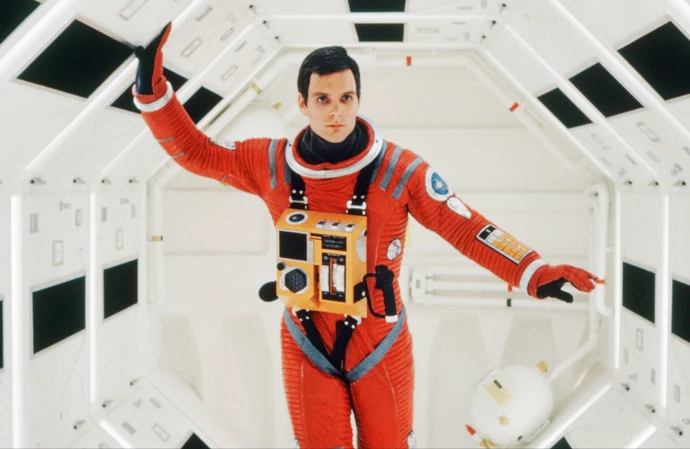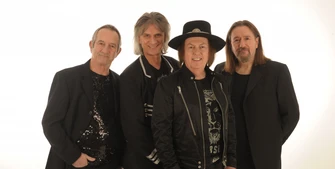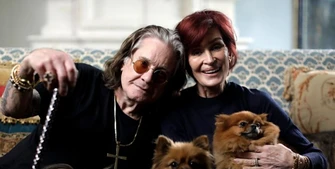2001: A Space Odyssey 5 facts that are out of this world
Stanley Kubrick’s 2001: A Space Odyssey wasn’t just another sci-fi movie - it redefined what cinema could be. Released in 1968 to puzzled critics and awe-struck audiences, the film blended hard science, philosophical mystery and unprecedented visual effects to create one of the most influential movies ever made. Nearly 60 years later, its impact can still be felt across every corner of science fiction. So, here are 10 remarkable behind-the-scenes facts about the sci-fi classic …
Stanley Kubrick’s 2001: A Space Odyssey wasn’t just another sci-fi movie - it redefined what cinema could be.
Released in 1968 to puzzled critics and awe-struck audiences, the film blended hard science, philosophical mystery and unprecedented visual effects to create one of the most influential movies ever made.
Nearly 60 years later, its impact can still be felt across every corner of science fiction.
So, here are 5 remarkable behind-the-scenes facts about the sci-fi classic …
1. Origins
2001: A Space Odyssey began at a lunch in 1964 where director Stanley Kubrick told publicist Roger Caras he wanted to “make the proverbial good science-fiction movie”.
Caras put him in touch with sci-fi author Arthur C. Clarke, who immediately replied by telegram: “Frightfully interested in working with enfant terrible.”
Together, they expanded Clarke’s short story The Sentinel into a 130-page script, which evolved into both the screenplay and Clarke’s companion novel.
Kubrick was also heavily inspired by the 1960 Canadian documentary Universe, even hiring its narrator, Douglas Rain, to voice the evil AI, HAL 9000.
2. Different titles
During development, Kubrick and Clarke jokingly referred to their cosmic epic as How the Solar System Was Won, a parody of the 1962 Western blockbuster.
Working titles included Project: Space, Across the Sea of Stars, Farewell to Earth and Jupiter Window.
MGM even issued a 1965 press release announcing the movie as Journey Beyond the Stars.
Clarke later confirmed in The Lost Worlds of 2001 that Kubrick alone chose the final title, calling it “an homage to Homer,” with the number 2001 serving as a marker of a new millennium and a symbolic leap for mankind.
3. Score scrapping
Though famed for its classical music, 2001: A Space Odyssey originally had a full score composed by Alex North, who previously worked with Kubrick on Spartacus.
The director decided late in post-production to abandon North’s compositions in favour of Strauss, Ligeti and Khachaturian - believing the movie should be “a visual, nonverbal experience”.
North wasn’t informed, and he discovered the replacement only when he attended the 1968 premiere.
His unused score remained unheard until it was released decades later on CD and later on vinyl.
4. HAL’s demise
HAL’s chilling shutdown scene - in which the computer sings Daisy Bell - was inspired by Clarke’s visit to Bell Labs in the early 1960s.
There, he watched an IBM 704 computer sing the same tune, the first ever computer-synthesised song.
This cemented the idea that HAL might be an indirect play on “IBM,” since each letter is alphabetically adjacent.
Clarke dismissed the theory, maintaining HAL simply stood for “Heuristically programmed ALgorithmic computer,” but the eerie coincidence remains one of cinema’s great fan debates.
5. Secretive Kubrick
Kubrick demanded extreme secrecy for 2001: A Space Odyssey, ordering props destroyed to prevent replicas and insisting that all outtakes be eliminated.
After premiering the movie, he even cut 19 minutes for pacing and instructed that the removed footage be destroyed.
For decades, fans believed it was gone forever - until 2010, when 17 minutes were rediscovered in a Kansas salt mine, perfectly preserved.
Visual effects legend Douglas Trumbull has since expressed hope that stills and frames from the lost scenes may appear in a future archival project.












